So when I sat down to write this blog post about Fiji, what emerged was a love story. I mean, I seriously love this country, and like all true love, my adoration only deepens with time. I was planning on waxing poetic on how amazingly loving and welcoming the native Fijian people are, and about how gorgeous the country is, and about how deep and beautiful traditions live on in Fijian village life, and about how much Fijians take pride in their country. But really, I don’t have the words; you have to experience Fiji to understand it. It is still, after over a quarter of a century of travels, my favourite country in the world to visit.
Oh, and did I mention the awesome diving? ;^)
I first visited Fiji in 1982, as a laid off flight attendant with a free pass burning a hole in my jeans. Being of the Jaws generation, I was very fearful of sharks then, and barely ventured in to the water to snorkel. Once I saw some shadows lurking off the edge of the reef, at Beachcomber Island, where I found myself partying with other footloose and fancy free twenty-somethings, I did not go back in the water again. Who knew what gorgeousness I missed out on? And who knew I would grow to love sharks?
Fast forward through twenty-five years, to 2006.
So I’ve got this awesome husband/buddy who was willing to venture back to Fiji with me to revisit my happy place, despite the pretzeling long flight in the back o’ the bus on Air Pacific. We had been doing some great dive jaunts, but this was the farthest from home that we’d flown. We found ourselves on Nananu-i-ra Island, at a charming little resort (that is no more), diving with a local operator (also no more) and totally grooving on it, even though we now know they did not take us out to the really good stuff. I had visited this island on my backpacking adventure in 1982 as well, staying at a very modest little cabin on a beach, and I had longed to return. The island didn’t change much over the years – and it is still unspoiled and sparsely populated. The same is true for Fiji as a country.
After the live aboard (Aggressor) that we did for the second half of the 2006 trip, which followed an itinerary up the east coast of Viti Levu (the southern ‘main island’ in the group), we looked at each other knowingly and said, “Hey, you know what? The diving we just did land-based from Nananu-i-ra Island (which is just off the north end of Viti Levu) was pretty much as good as the stuff we did from the Aggressor. I should clarify that the Aggressor never made it up as far as the Bligh and Vatu-i-ra waters – the strait between Viti Levu and the big island to the north, Vanua Levu.
Fast forward a few more years, and we were looking for somewhere in that area to return to stay and dive. Wananavu Resort (on the northern tip of the big island of Viti Levu) had been visited by some buddies, and they raved (in a good way ;^) about the place, so we gave it a whirl, and were not disappointed – the resort was, and is, lovely. At the time, Wananavu contracted out their dive operations to Ra Divers, based out of the nearby VoliVoli Resort. Ra had decent boats and some good staff, but it was very inconsistent in quality – one day, great dives on gorgeous sites, and then the next, it might be moo class on some less than stellar site nearby. Never on time, and some questionable safety practices – I could not in good conscience give this op a gold star.
Still, we liked Wananavu Resort so much that we went back again a year later, this time dragging a large enough group of buds with us that we were assured that we would get out to the Bligh, per Ra’s six diver policy. On that trip, several of us went on to do a week on the N’aia live aboard – a great operation. Interestingly, the N’aia also dives many of the same sites as we had done land-based with Ra Divers, in addition to many that are not easily reachable by day boat. On this trip, Ra again provided inconsistent service, and the managers of Wananvu let me know that they were pretty much done with Ra and were looking to start up a dedicated on-site op at the resort.
Dive Wananavu Fiji
Fast forward a couple more years, and enter Dive Wananavu Fiji – Wananavu Resort’s dedicated on-site dive operation, currently professionally managed by Chris & Vicky Liles.
The Liles have been around, if you know what I mean ;^) Seriously, they have been dive professionals for many years, working in various dive hot spots in North America, Asia, Hawaii, and Fiji. Wananavu was extremely fortunate to snag them for this new op – this couple know how to do it right. Both are PADI certified dive instructors, both are technical divers, and both are very accomplished photographers. They have worked hard to ensure that Dive Wananavu is set up with great boats, dive staff and facilities.
The resort also now offers Nitrox, which is a very good thing, especially if you buy it at a package price. They also offer numerous certifications, including Basic Open Water, Advanced, Rescue and Nitrox. I believe they are currently working on their PADI 5 Star rating, and should achieve that soon.
There is a dive office in the water sports complex in the resort’s marina, staffed from 8 a.m. to 4 p.m., with rinse tank facilities, a drying area, and secure spaces to store dive gear. This is a great improvement over past facilities, and made it easy for me to bag some shore dives. More on that later…
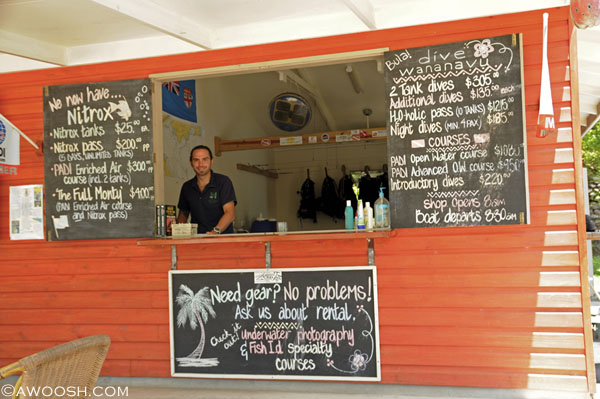
Chris in the office. Note: Prices are in Fiji Dollars – today’s (February 2013) rates: FJD$1 = US$.56
Every day that we dove during our recent stay, the boat left on time (8.30 a.m.), in fact, on some days, when all the guests had shown up and were ready to go, we left early. If this is ‘Fiji Time’, Dive Wananavu-style, I say bring it on.
Chris and/or Vicky were in the water with us most days, along with our assigned Fijian divemaster Kini, and we had fun taking pictures of each other taking pictures :^) The Liles are totally tuned in to social media, and photo blog and update their Facebook page almost daily – http://www.divewananavufiji.com/
Chris and Vicky are very personable, and I have no doubt that they are excellent instructors. They are also totally committed to getting their divers out to the Bligh/Vatu-i-Ra Waters, whenever conditions allow. They have confidence that they and their crew can find appropriate sites out there for all levels of divers. Having just dove with them, and enjoyed several new (to us) sites, I can see how dialled in and keen they are to share the best of the diving in this part of the world, in the safest possible way.
Our introduction to the Liles was awesome. We were checking in at the resort after our night flight out of LAX (which got us into Nadi Airport at 5.30 a.m. and up to the resort by 9 a.m.), and they came up to introduce themselves. We agreed to sit down together during our breakfast (which the resort kindly offered us on our arrival), and over coffee they introduced themselves and the new dive program at the resort.
This professionalism continued the next day when we boarded the dive boat and a very thorough boat and safety briefing was given – which was repeated every day there was a new diver on the boat.
And did I mention we left the dock early? I was a happy dive consumer…
Really, it is rare that I can honestly say that there is nothing in the “needs improvement” column for a dive operator. But it’s true about Dive Wananavu Fiji, under the management of the Liles. They are doing it right. The only thing that would be a great addition would be a larger camera rinse tank and some sort of dedicated camera room with charging stations and camera bins down at the marina level. It is a hilly resort (much like Lembeh Dive Resort) and schlepping a bigass camera is serious work in that heat. The camera room is already in motion, and I believe it will elevate this dive op to the total real deal for serious photographers. I also believe that the Liles are planning for some future photo workshops at the resort. They will be great facilitators, and you couldn’t ask for a more picturesque location.
The Liles advise that even with only two divers on the boat, they will still go out to the Bligh. This is a very refreshing change from Ra Divers, who used to insist on six divers to go, and would not take any divers out there that had not been checked out locally first. Chris and Vicky have figured a way to choose sites where new divers can be comfortable (out of the current, with a bottom), but still have the ability to accomodate more advanced divers in the same areas.
The diving is more expensive than it was with Ra, but in my experience you get what you pay for. The fuel cost alone to get divers out to the Bligh is significant, and Dive Wananavu employs several good Fijian divemasters and boat captains so the biz runs smoothly. And as I mentioned before, it is a much sweeter deal to buy a package than dives a la carte.
They currently have two boats in the fleet, the larger Nami, equipped with two rip roaring Yamaha 225 (outboards) that can take 16 divers (+ crew), and the smaller Nami Lailai, equipped with a Suzuki 125 (outboard) which can take 6 divers (+ crew). Both boats are well maintained and are fully equipped with working radio, fire extinguisher, plenty of life vests, sun cover and oxygen kits. There is ample fresh drinking water supplied on the boat, and between dive snacks are offered.
On this trip, I had two of the daughters along with me. They are great divers, but the best analogy I can give is that diving with them is a bit like herding kittens ;^) So, in the interest of returning home with both of them in tow, and giving a nod to the beautiful and colourful seascapes in this part of Fiji, I mostly shot wide angles. That way, I could keep a better eye on the girls than I would if I was shooting macro (where it often takes some time to set up the shot so my head is in the camera a lot), and I could ask these bonnie young lasses to model for me when I thought a diver might be a nice addition to an image.
The Diving
We dove a couple of new (to me) sites – the first at a site called Vatu Express (which fortunately did not live up to its name, and only confronted us with mild current), another altogether new site that Chris called “The Lighthouse” (which I think he is going to need to re-define, as I am betting that there are numerous other lovely sites to be discovered on this reef), and Flat Iron (the reason for this name totally eludes me, as it does not resemble a flat iron in the least – more a double bommie with gorgeous (huge!) sea fans and tons of colour and fish life).
We also did a one day excursion (with a third tank at extra cost), and got out to do two dives at E6 – a legendary Fiji site – about a one hour run from the resort on obliging seas, with dual Yamaha 225’s. Mr G and I dove E6 (and Mount Mutiny – also one of the dives of that great day) from the N’aia a few years ago, and I was thrilled to get out that far on a day boat. Vicky tells me they’ve even gone over off the coast of Vanua Levu in good weather, for some exploration dives…
We also dove Mellow Yellow (one of my all-time favourite sites – it totally explodes with colour and fish), Black Magic Mountain (which took a bit of a hit in the recent cyclone and was missing most of its previously pretty coral gardens on the top of the bommie, but that was mitigated by a huge school of jacks lurking on the two dives we did there), Heartbreak Ridge (which is a gorgeous dive with two deep cut throughs), Instant Replay (tons of colour there from large gardens of soft corals), and Purple Haze (which was a minor disappointment as we missed most of the colorful wall while we were drifting in current trying to reach the reef, but that disappointment was mitigated by ending the dive in a gorgeous, healthy, shallow hard coral garden).
And about that cyclone in December? It was a bad one. Chris and Vicky report that a lot of the Sailstone Reef (which is close by the resort) was very hard hit. Other sites, like Garden of Eden, also got nailed. But for all the damage on some of the windward reefs, there are still huge swaths of healthy reef to enjoy. Two notable, super healthy shallow coral gardens were at Lighthouse Reef and Purple Haze. As long as healthy coral thrives (and spawns) nearby, the devastated bits should regenerate over time.
Conditions for our week were pretty benign – sunny skies, hot, hot, hot, with calm seas (except for one morning that was pretty snotty, but thankfully totally calmed down during our first dive) and very modest currents. Visibility was not as as good as I have seen it on past trips, likely due to heavy rainfall in the weeks prior to our trip (February is still in the “wet season” in Fiji). I had to be pretty careful with strobe placement to minimize splooge in the wide angle shots.
The Shore Dive
Even though I had visited the resort several times previously, I never managed to get in the water to do a shore dive. This was mostly due to inclement weather conditions that made the shore dive entry pretty rough, and also due to hassles with storing equipment after the dive (as there was no secure dive shed on the property). On this trip, calm ocean and on-site dive facilities beckoned me to give it a whirl. I pre-arranged a time to pick up a tank (which was nicely set up for me). Dive staff offered to help me schlep my gear and my camera out to the entry stairs – a bit of a (level) walk, which was very kind. There is also a wheelbarrow available for wheeling the gear out to the shore dive entry.
Although the visibility was generally pretty sucky right in front of the resort, I found several neat macro subjects to shoot in the shallows, including pipefish and nudibranchs. I ended up doing three shore dives during our stay, and on each one ventured a little further down the beach, as there was no current at all to worry about. On the last (2 hour!) shallow dive, I was maybe 150 metres west of the resort, and I found myself in the most fishy, stunning coral garden. I saw numerous varieties of angelfish, cardinalfish and butterflyfish, with tons of juveniles and intermediates. This is clearly a healthy nursery. My pics of the fish aren’t great, as I was shooting a 105mm macro lens, and it was tough shooting in the less than stellar visibility, but I hugely enjoyed the dive.
I would describe the diving right in front of the resort as “muck diving” – so really would only be of interest to macro photographers and critter hounds. There was also a really weird upwelling that made for chowder visibility below 30 feet. But the diving/snorkeling down the beach? Gorgeous, I tell ya, simply gorgeous, if you aren’t too hung up on gin clear viz, and you stay in the shallows…
Wananavu Resort Revisited
Before I share more of the underwater pix, I will just briefly re-review Wananavu Resort itself. I have written about this delightful place extensively in the past, and things remain pretty much the same, although Ben and Rachel Plummer (the previous managers) have moved on, and a new manager – Allan Carter – is now running the show. There has been some turnover in staff as well, but lots of familiar faces greeted us on arrival and took great care of us during our stay. The food remains good – still awesome soups and fish dishes.
The accommodations remain pretty much the same as well – the resort kindly upgraded us to a two bedroom bure on arrival as they had one open, which we really appreciated, as we had originally booked an oceanview bure with three single beds which would have been a bit of a tight squeeze. They have a couple of these two bedroom units, both of which have cooking facilities (albeit fairly basic), a small lounge, and eating areas (inside and out).
The resort offers several ‘levels’ of accommodations, from budget-minded garden duplex bures, all the way up to gorgeous honeymoon bures with private plunge pools. It is also a resort that caters to a fairly broad, and loyal, non-diving market.
I think Wananavu is a great gig for divers with non-diving families, as there is a nice pool area, a reasonable beach (with good swimming), kayaks, and a tennis court on the large resort property. Excursions are offered daily to local interests. I believe that childminding is available through Reception, but that is something you might want to confirm before booking. There is also a spa on the property. We had several spa massages, and they were good. The gift shop is quite well stocked for basics (and cute sundresses), and a taxi ride to the nearest town (Raki Raki) is not outrageous. There is one computer where you can buy time (not super cheap), and they now have wireless available on the property through a third party vendor. It was FJD$50 for seven days.
Wananavu Resort is a bit of a sleepy place, and very laid back. I think that is what I like best about it – it is not pretentious in the least, just friendly, consistent and beautiful.
The resort closed just after we visited to do a minor renovation in the dining area and adjacent deck, and the restaurant area washrooms. I am sure it will be lovely.
And I still recommend purchasing a package deal – it is much less expensive buying a transfers/meals/accommodations/diving package than buying the pieces a la carte. Wananavu has a very responsive reservations team (we corresponded with Mereani, and she was great), and they put together a very attractive package for us. Chris and Vicky also advise that they offer group discounts for staying/diving. Best to contact them directly for details – diveshop@wananavu.com
Getting There
Air Pacific runs non-stop flights several days of the week out of LAX. The beauty of these flights is that they depart late in the evening – at 10.30 pm – and through the magic of the International Date Line, you arrive in Fiji, two days later, at around 5.30 in the morning. This way, once you clear Customs & Immigration, locate your bags, funnel through the baggage screener and find your driver in the Arrivals area it is 6.30 a.m. or so – and dawn is breaking. The (beautiful) drive up to the resort was about two and a half hours on this trip, so you if not delayed, you arrive at the resort in time for a late breakfast. We stopped in Tavua for a few minutes (about halfway between Nadi and the resort) to provision beer for our bure fridge.
The schedule on return is similar, with the Air Pacific flight leaving Fiji at 10 at night, and arriving in Los Angeles late morning, the same day. Our flight time was 9.5 hours on the way there, and 10 hours on return. Air Pacific really packs ’em in, but with a neck pillow and sleeping pill, it is survivable. And the night flights mean you have almost a full day on arrival, and almost a full day on the day of departure at the resort. Late checkouts are doable if the resort is not full, and you can arrange to be driven down to the airport in the afternoon.
In no particular order, here are some of my favourites for the trip. I will eventually get around to putting up a complete gallery, and when that happens, I’ll link it in the blog.

Pajama Cardinalfish – Sphaeramia nematoptera
When I first saw this fish on the house reef in front of the resort, I was super excited. I had not seen this particular variety of Cardinalfish before (there are many, many kinds). Little did I realize that this bit of reef was thick with them – literally hundreds. Very cool, but a reclusive fish to photograph.
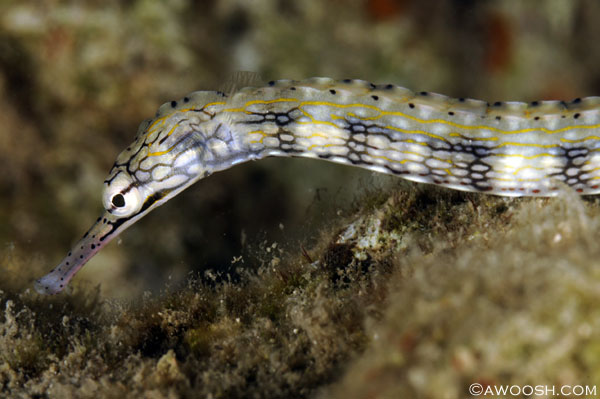
Reeftop Pipefish – Corythoichyhys haematopterus
I had heard that there were pipefish on the house reef, but who knew they’d be as shallow as six feet, almost right under the entry stairs? Amazing…
Wow, that was a bit of a download. I wanted to write a thorough update about the resort, especially the new dive operations, and as well share some of the many pictures I took on the trip.
I really hope that this positive report about Wananavu and the imagery of the outrageously colourful and lively reefs will encourage my diving buds to get their arses down there sometime soon. It truly is an excellent destination.

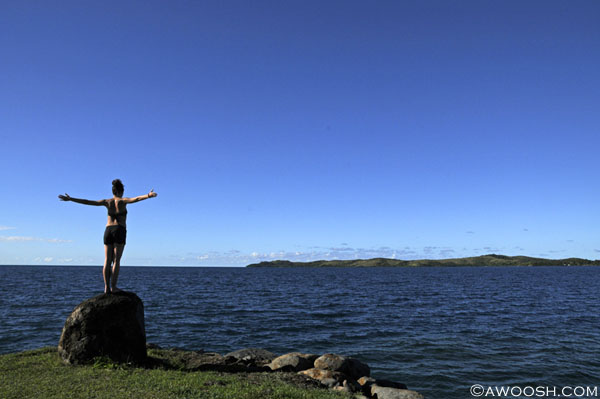
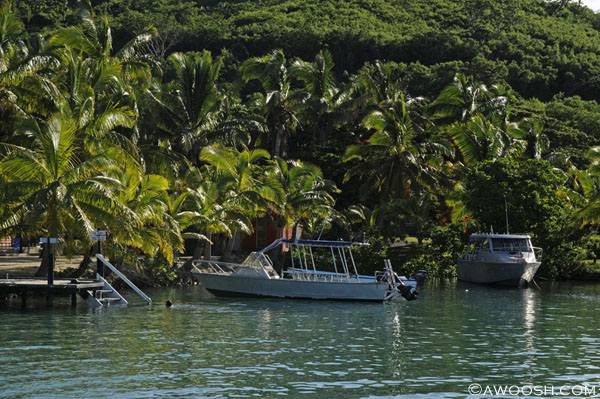

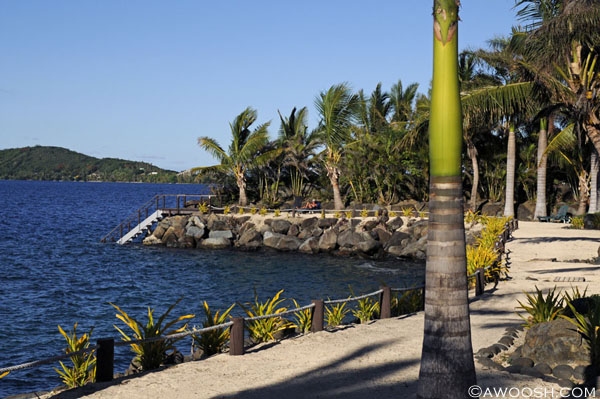
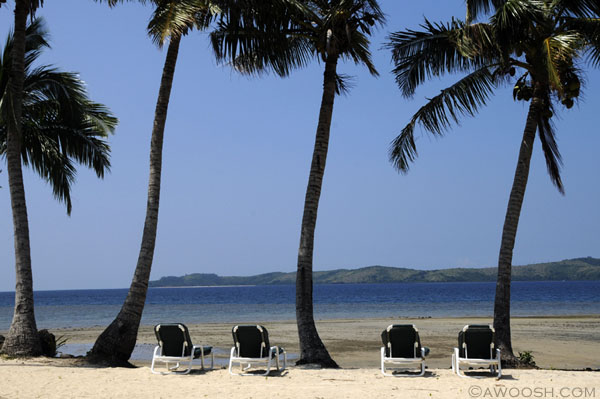

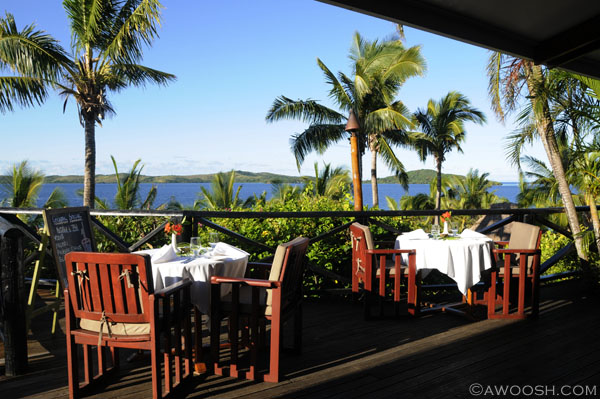
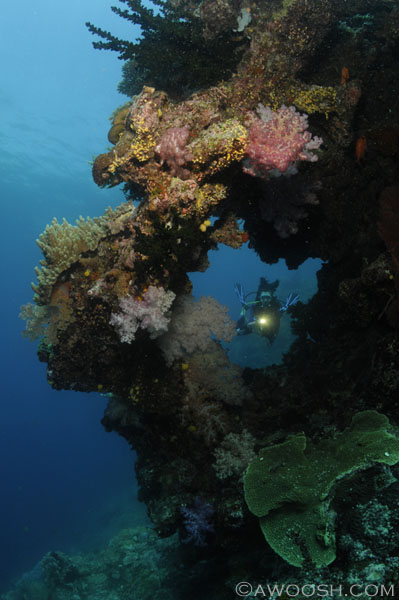
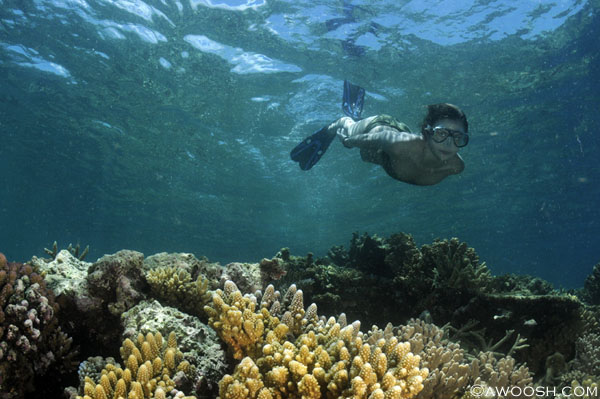
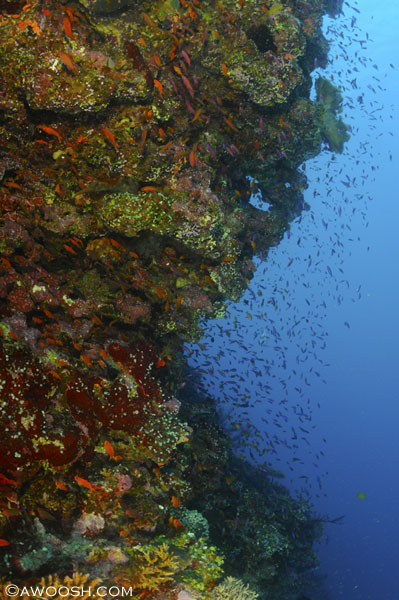
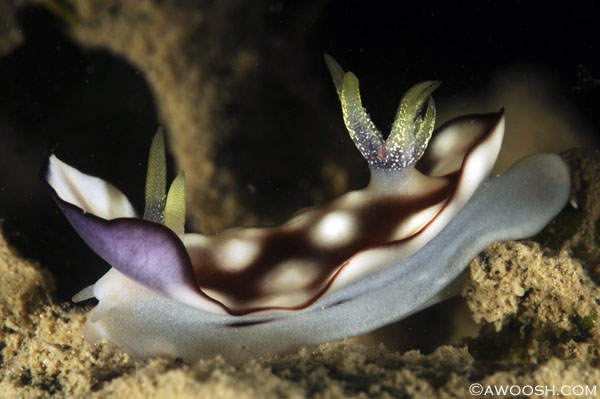
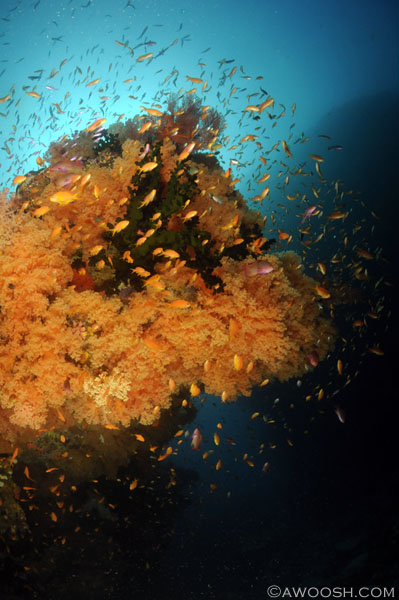
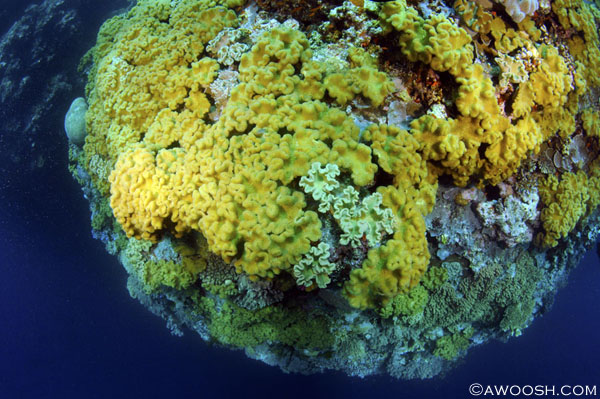

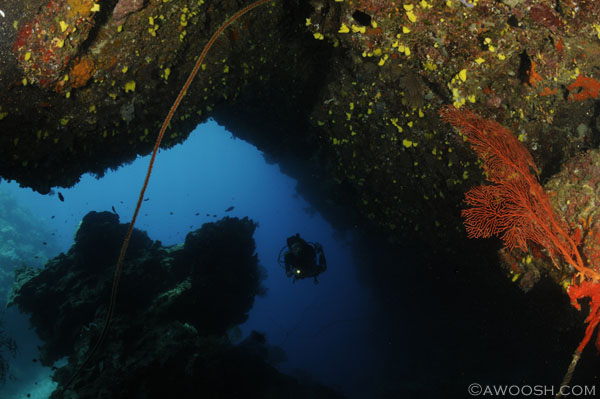
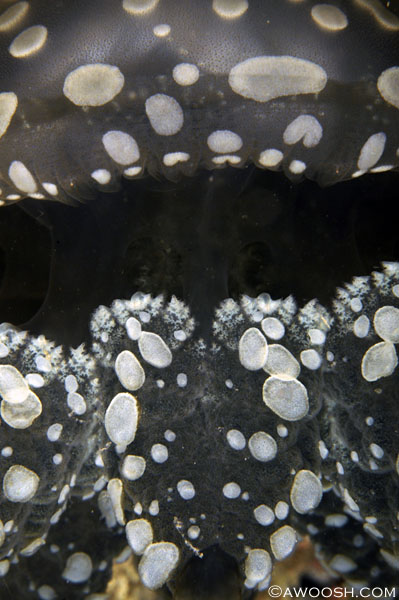


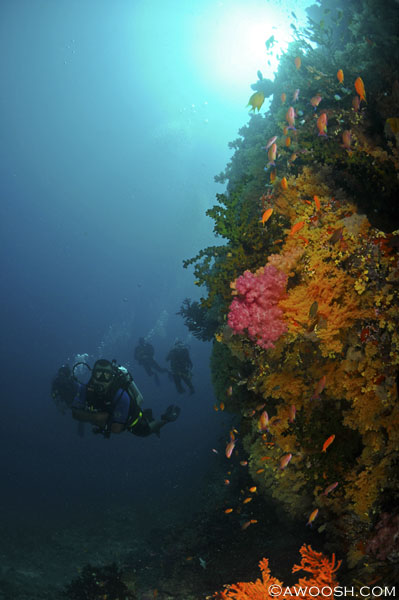



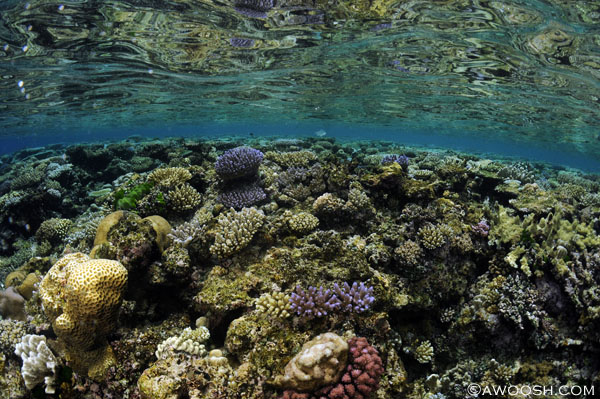

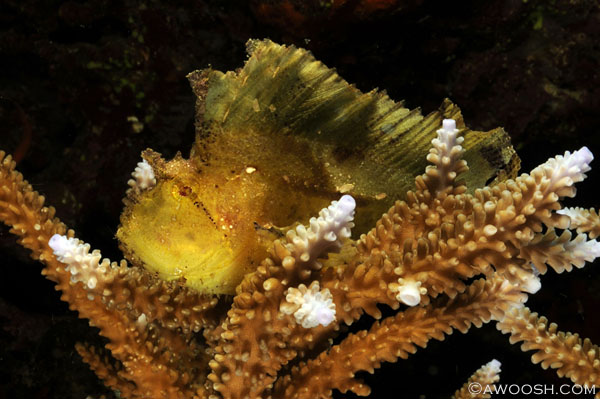
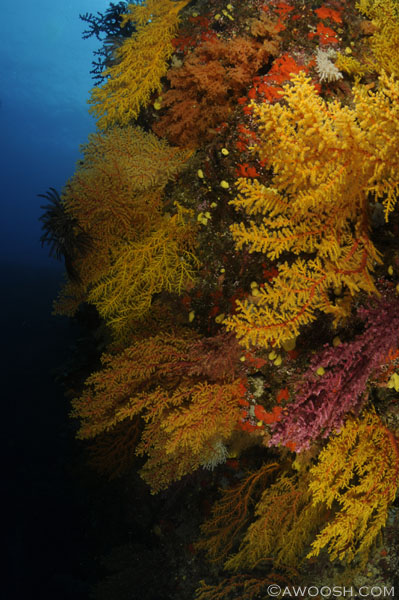

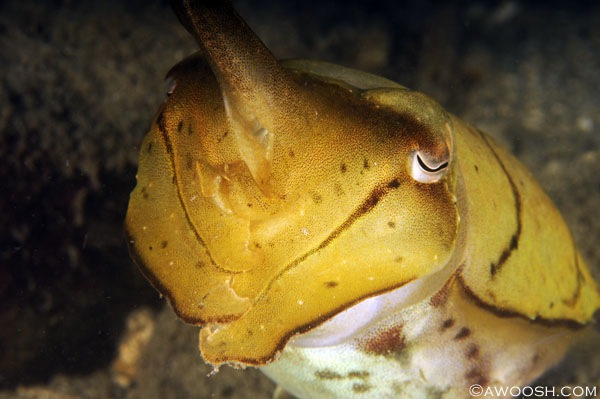
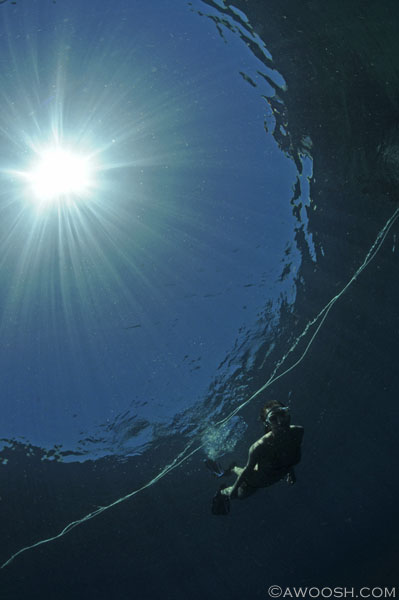
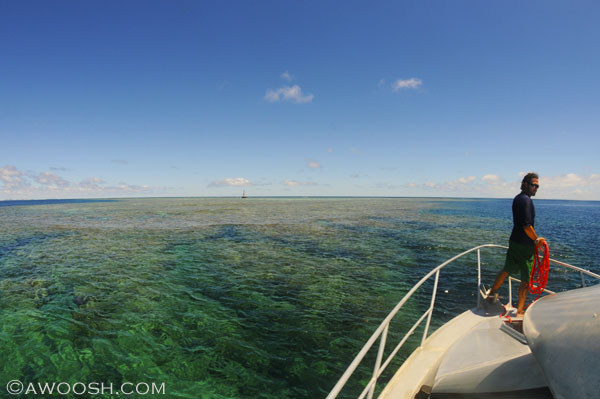
25 Responses to Fiji 2013 – Love, Actually